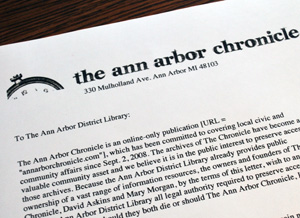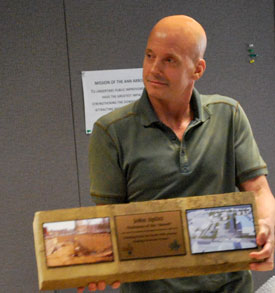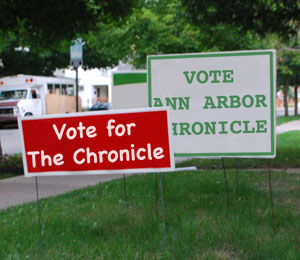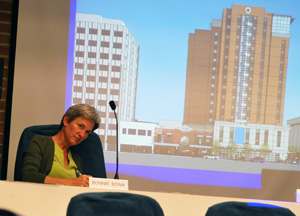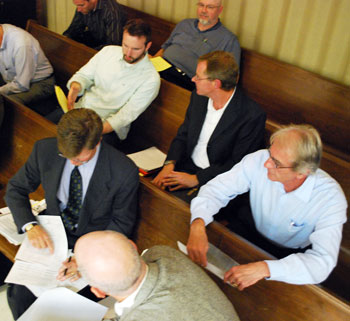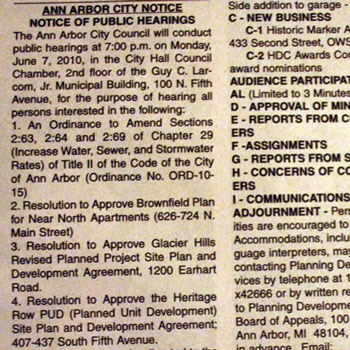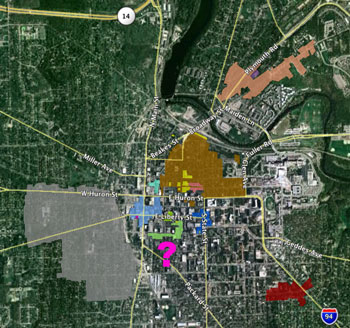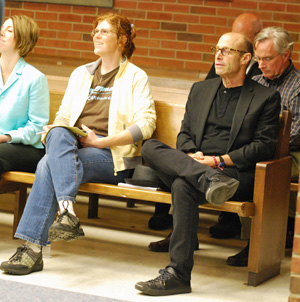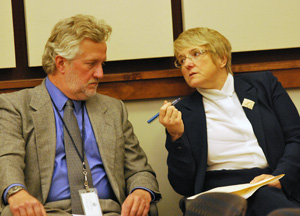More Solar Energy Projects In the Works
Bonnie Bona insists that the best way to make pesto is with a mortar and pestle. While she admits the method is more labor-intensive than using a food processor, Bona cites it as yet another tip to become more eco-friendly.
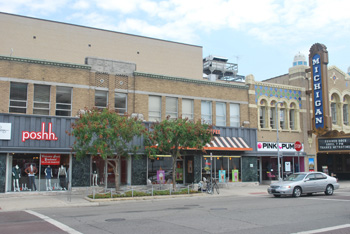
The plain brick wall on the Michigan Theater Building on East Liberty in downtown Ann Arbor – rising up behind the storefronts – will be the site of a solar panel installation funded by XSeed Energy, a program of the Clean Energy Coalition and the city of Ann Arbor. (Photos by Mary Morgan.)
As a project manager for the Ypsilanti-based Clean Energy Coalition, Bona specializes in this art of saving energy. She is quick to add, however, that “my goal isn’t to make people sacrifice and suffer. It’s to make them see opportunities where life can be better and, oh, by the way, it uses a lot less energy.”
But it’s not just about using less energy. Bona and others in the Ann Arbor area are involved with projects that focus on generating alternative energy, too – in particular, solar power. Prompted in part by the lure of tax credits and available state and federal funding, an increasing number of efforts are underway to install solar panels on individual residences, businesses, nonprofits and schools – including, as one recent example, the Rudolf Steiner School of Ann Arbor.
And in mid-August, the Ann Arbor Historic District Commission unanimously approved two solar installation projects in historic districts, one for a private home on South Seventh Street, and another at the Michigan Theater. With some citing concern over aesthetics, commissioners acknowledged that they’ll likely see more of these requests in the future, and discussed the need to develop guidelines for solar installations within the city’s historic districts. [Full Story]





